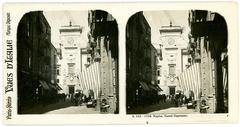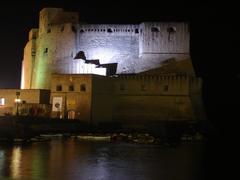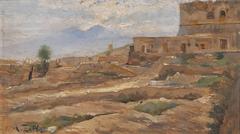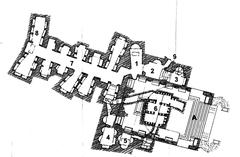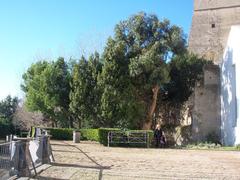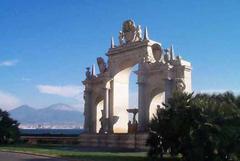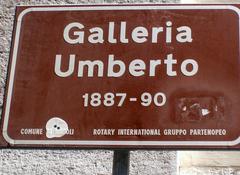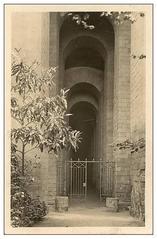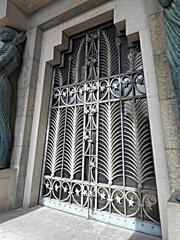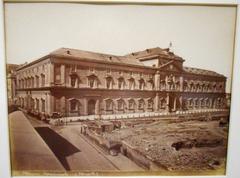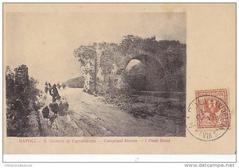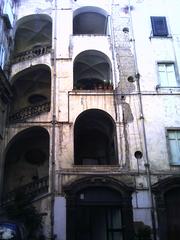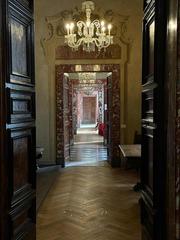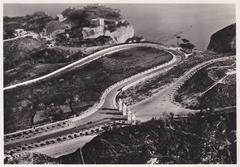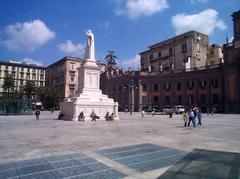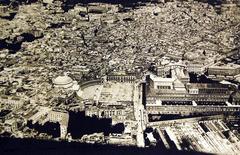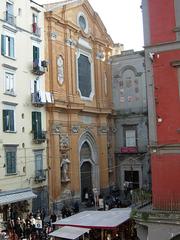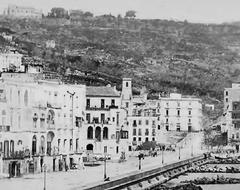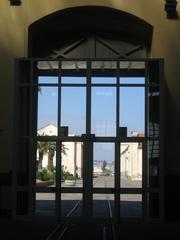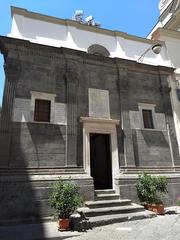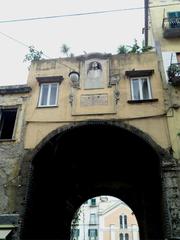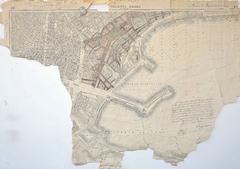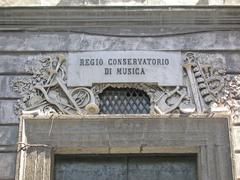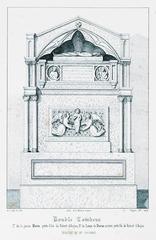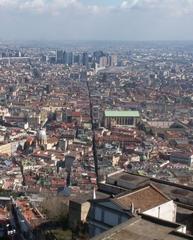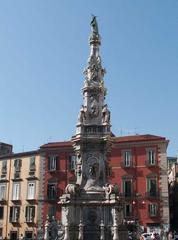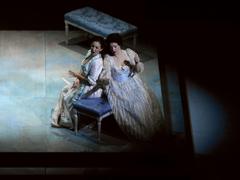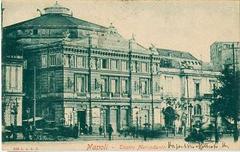
Roman Theatre of Neapolis: Visiting Hours, Tickets, and Historical Guide
Date: 04/07/2025
Introduction
Nestled in the heart of Naples’ bustling historic center, the Roman Theatre of Neapolis stands as a remarkable testament to the city’s layered Greco-Roman past and vibrant cultural legacy. Dating back to the 1st century BCE and built atop an earlier Greek structure, this archaeological marvel is not only a window into ancient architectural ingenuity but also a living symbol of Naples’ adaptive urban evolution. Unlike many ancient ruins, the theatre is intricately woven into the fabric of the modern city, with its remains embedded beneath homes and shops, offering visitors a unique blend of history and contemporary life.
This comprehensive guide details the fascinating origins, architectural highlights, practical visitor information, and cultural significance of the Roman Theatre of Neapolis. Whether you are an archaeology enthusiast, a curious traveler, or a lover of the performing arts, this article will equip you with everything you need to plan an enriching visit to one of Naples’ most captivating historical sites.
Historical Overview
Origins and Construction
The Roman Theatre of Neapolis traces its roots to the 3rd century BCE, with significant Roman construction in the 1st century BCE, layered atop an original Greek koilon. This stratification reflects Naples’ continuous urban and cultural evolution, merging Greek and Roman traditions. Archaeological discoveries, including statues personifying civic virtues such as Homonoia (Concord) and Dikaiosyne (Justice), underscore the theatre’s role as more than merely an entertainment venue—it was a public space central to social and civic life (Academia.edu).
Strategically situated within the city walls and adjacent to the main street (cardo maximus), the theatre’s location followed Vitruvian principles, optimizing comfort and accessibility for spectators.
Architectural Features
Distinct for its semi-elliptical cavea—departing from the more typical semicircular Roman theatre design—the structure incorporated local stone and imported marble. The theatre could seat approximately 5,000–6,000 spectators, with seating arranged in concentric tiers and divided by social class. Luxurious seats adorned with lion’s claw motifs were reserved for dignitaries.
Key architectural elements include:
- Cavea: Semi-elliptical, built into a natural slope for optimal sightlines and stability.
- Orchestra and Stage: The orchestra, reserved for important guests, and a versatile stage (scaenae) backed by a richly decorated scaenae frons. Metal plugs in the orchestra’s orthostats suggest the theatre also hosted gladiatorial games and animal hunts, functioning as a hybrid theatre-amphitheatre.
- Subterranean Chambers and Engineering: Networks of underground chambers and sophisticated drainage channels, some later reused during the Bourbon era and visible today, illustrate advanced Roman engineering (Napoli Sotterranea).
Social and Cultural Role
The theatre served as a vibrant hub for dramatic performances, public meetings, musical contests, and imperial celebrations. Inscriptions and placards encouraged civic engagement, highlighting its importance in ancient society. Major renovations under the Flavian emperors and subsequent embellishments during the Nerva-Antonine dynasty signified its enduring prestige.
With the rise of Christianity, the theatre’s use for pagan spectacles declined, and after the Edict of Milan (313 CE) and Emperor Arcadius’s 392 CE ban on such performances, it fell into disuse and was gradually repurposed and built over during subsequent centuries.
Rediscovery and Preservation
Centuries of urban development concealed the theatre until modern archaeological excavations in the 20th and 21st centuries uncovered its remains, revealing Naples’ impressive historical layers (Pleiades). Preservation remains challenging due to the dense urban landscape, but ongoing research and guided tours have made sections accessible to the public.
Location and Urban Integration
The Roman Theatre of Neapolis is embedded within Naples’ historic core, bounded by Via Anticaglia, Via San Paolo, Vico Giganti, and Vico Cinquesanti, just behind the Decumano Maggiore (Via Tribunali) and near the Basilica di San Paolo Maggiore (Napoli Turistica). Unlike many ancient theatres, it is literally incorporated into contemporary buildings, with modern apartments, shops, and streets built atop its ancient remains (Napoli Sotterranea).
Visiting the Roman Theatre of Neapolis
Visiting Hours and Tickets
- Opening Days: Tuesday through Sunday (closed Mondays and major public holidays)
- Hours: Typically 9:00 AM–6:00 PM (last entry varies between 4:30–5:30 PM depending on the tour provider)
- Guided Tours: Visits are exclusively by guided tour, often organized as part of cultural initiatives such as “Il Teatro tra le Mura”
- Tickets: Prices range from €5–10 for adults, with discounts for students, seniors, children, and free entry for residents or during special events. Tickets can be purchased online (e.g., Eventbrite), via the official Naples tourism website, or on-site (Napoli Turistica; mexicohistorico.com).
Entry Point: Via San Paolo 4, Naples
Accessibility and Facilities
Parts of the theatre are accessible to visitors with limited mobility, but many areas involve stairs, narrow passages, and uneven surfaces. Guided tours may be available in multiple languages; check when booking. Facilities on-site are minimal, but nearby cafés and shops provide refreshments and restrooms (Evendo).
Getting There
- By Metro: Line 1 (Toledo station), then a 10-minute walk
- By Train: Napoli Centrale, then Metro Line 1 or city buses
- By Bus: ANM bus network, including line R2 from Piazza Garibaldi
- By Car: Limited parking; nearby garages recommended
Visitor Tips
- Wear sturdy shoes for uneven terrain
- Morning visits offer the best light for photography
- Respect site rules; avoid touching ancient remains
- Book tours in advance, especially during special events or free admission periods
- Combine your visit with nearby attractions such as Spaccanapoli, Naples Cathedral, and the San Gregorio Armeno district
Architectural and Archaeological Highlights
- Subterranean Chambers: Some accessed through modern apartments, highlighting the theatre’s integration into the city’s living fabric (Napoli Sotterranea)
- Drainage Systems: Ancient water channels, later reused, are visible in parts of the site
- Decorative Fragments: Statues, marble, columns, and wall decorations offer insight into the theatre’s former grandeur
- Historical Anecdotes: Emperor Nero is said to have performed here, with an earthquake interpreted as a sign of divine approval (Napoli Turistica)
Cultural Significance and Modern Influence
The Roman Theatre of Neapolis remains central to Naples’ theatrical and civic identity. Its influence persists through modern festivals such as the Napoli Teatro Festival and community celebrations that echo ancient traditions (mexicohistorico.com; veronikasadventure.com). Contemporary performances, educational tours, and preservation projects continue to engage both residents and visitors, ensuring the site’s legacy endures.
Frequently Asked Questions (FAQ)
Q: What are the Roman Theatre of Neapolis visiting hours?
A: Typically Tuesday–Sunday, 9:00 AM–6:00 PM, with last entry 4:30–5:30 PM. Guided tours may have specific schedules; always check official sources.
Q: How do I purchase tickets?
A: Tickets are available online (Eventbrite, Naples tourism websites) or at the entrance. Advance booking is recommended.
Q: Are guided tours available?
A: Yes, guided tours are standard and highly recommended for a comprehensive experience.
Q: Is the theatre accessible for visitors with disabilities?
A: Partial accessibility; many areas feature stairs and uneven surfaces. Contact tour providers for details.
Q: What other attractions are nearby?
A: Naples National Archaeological Museum, Spaccanapoli, and the San Gregorio Armeno district.
Plan Your Visit
To fully appreciate the Roman Theatre of Neapolis, plan at least 1–2 hours for your visit and consider pairing it with other sites in the historic center. For up-to-date information on opening hours, ticketing, and special events, consult official Naples tourism resources. Download the Audiala app for audio guides and stay connected via social media for the latest news and events.
Summary
The Roman Theatre of Neapolis is a magnificent example of Naples’ enduring cultural and historical landscape. Its unique integration within the modern city, sophisticated architecture, and layered significance—from Greek origins through Roman grandeur to contemporary cultural life—make it an essential destination for every visitor to Naples. Preservation efforts, guided tours, and community engagement continue to highlight the theatre’s role as a living monument, bridging ancient and modern Naples. To ensure a rewarding visit, plan ahead, secure your tickets, and immerse yourself in the stories and spaces that define one of Italy’s most fascinating historical treasures.
Sources and Further Reading
- Roman Theatre of Neapolis: History, Visitor Guide, and Exploring Naples’ Ancient Gem, 2024, Academia.edu (Academia.edu)
- Visiting the Roman Theatre of Neapolis: Hours, Tickets, and Historical Insights, 2024, Napoli Turistica (Napoli Turistica)
- Exploring the Roman Theatre of Neapolis: History, Visiting Hours, Tickets, and Cultural Significance, 2024, Mexicohistorico.com (mexicohistorico.com)
- Roman Theatre of Neapolis Visiting Hours, Tickets & Guide to Naples’ Historic Site, 2024, Evendo & Napoli Turistica (Evendo)
- Napoli Sotterranea: The Roman Theater, 2024 (Napoli Sotterranea)
- Veronika’s Adventure: The Neapolitan People, Culture, History, and Folklore, 2024 (veronikasadventure.com)





